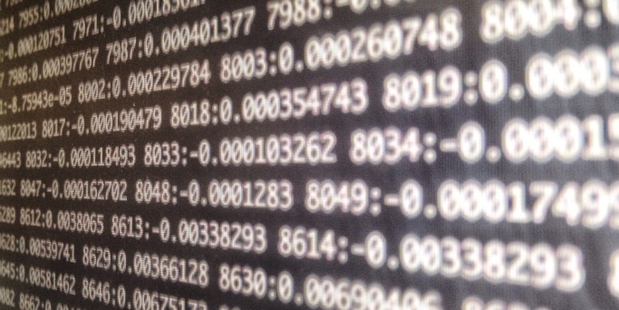Machines get creative with words
Source: Dominic Basulto
 Getting from word to image is actually harder than it sounds, since it relies on a specific branch of artificial intelligence known as natural language processing. Photo / Getty Images
Getting from word to image is actually harder than it sounds, since it relies on a specific branch of artificial intelligence known as natural language processing. Photo / Getty Images
AI is slowly taking over what was traditionally a human quality.
The first thing that you might think when you see visual images produced by WordsEye is that you are viewing the work of an extremely talented and creative artist. Pictures of a dinosaur standing next to a chocolate cake, shiny gray spaceships on the lunar surface and rainbow-coloured African safari animals are easily worth 1000 words.
However, these images were created by a machine. WordsEye is a new web app that translates a few lines of user text about a scene into an artistic image using artificial intelligence.
For example, a user might type in, "The canyon is tall. An enormous chocolate cake is three feet to the left of the dinosaur."
That would trigger the app to, first, understand the words "chocolate cake", "dinosaur", and "canyon" from its library of concepts and then come up with an artistic representation of how these three concepts might fit together within a single scene.
Last month, WordsEye released a one-minute YouTube video showcasing some of the original creations that have been made in just the first month of private beta testing. And, on the WordsEye website, there's a gallery of images that users have created with the app and that are being shared across social networks.
Getting from word to image is actually harder than it sounds, since it relies on a specific branch of artificial intelligence known as natural language processing.
In order to go from "text to scene" and "type a picture", you first have to be able to extract meaning from the words, and then use a combination of mathematics, probability and statistics to determine the relationships between these words.
Then, you have to be able to pull up the right images that match these words and apply a few artistic filters to transform them into gorgeous pieces of art.
Once WordsEye appeared on Product Hunt the suggestions about what's next for the "type a picture" concept started to pour in. Some suggested that WordsEye could become a tool for virtual reality or gaming, a way to teach foreign languages, or an easy way to create explainer articles about scientific concepts. Or journalists might use it to create images to accompany an article.
However, there might be a bigger story here, and that's how artificially intelligent machines are assuming traits - such as creativity - that were once the exclusive preserve of humans. We might refer to machines as "intelligent" or "rational" or "efficient", but we don't typically think of them as "creative". That might be changing as artistic fields such as painting embrace AI. For now, applications such as WordsEye are limited by the number of words they can understand, as well as by the limits of natural language processing and the types of artistic models the app can create.
However, there are some interesting implications if machines actually do become creative. They might challenge us, for example, to rethink what we mean when we use the word "creativity".
We traditionally think of creativity as being a gift, or a spark, or a light bulb moment - but it might just be a really clever algorithm. Dali and Picasso were just like you or me; they just had better algorithms and a few cool filters.
From that perspective, it's worth comparing some of the all-time famous surrealist paintings with a few of the images created by WordsEye. Which would you prefer, Dali's Persistence of Memory or an image of a surrealist planetary terrain populated by dinosaurs and chocolate cakes?
At some point, it's conceivable that there will exist an art market for machine creativity. In an era where collectors routinely pay tens of millions of dollars for the world's most famous paintings, how much would they be willing to pay for a piece of art created by a machine?
| }
|